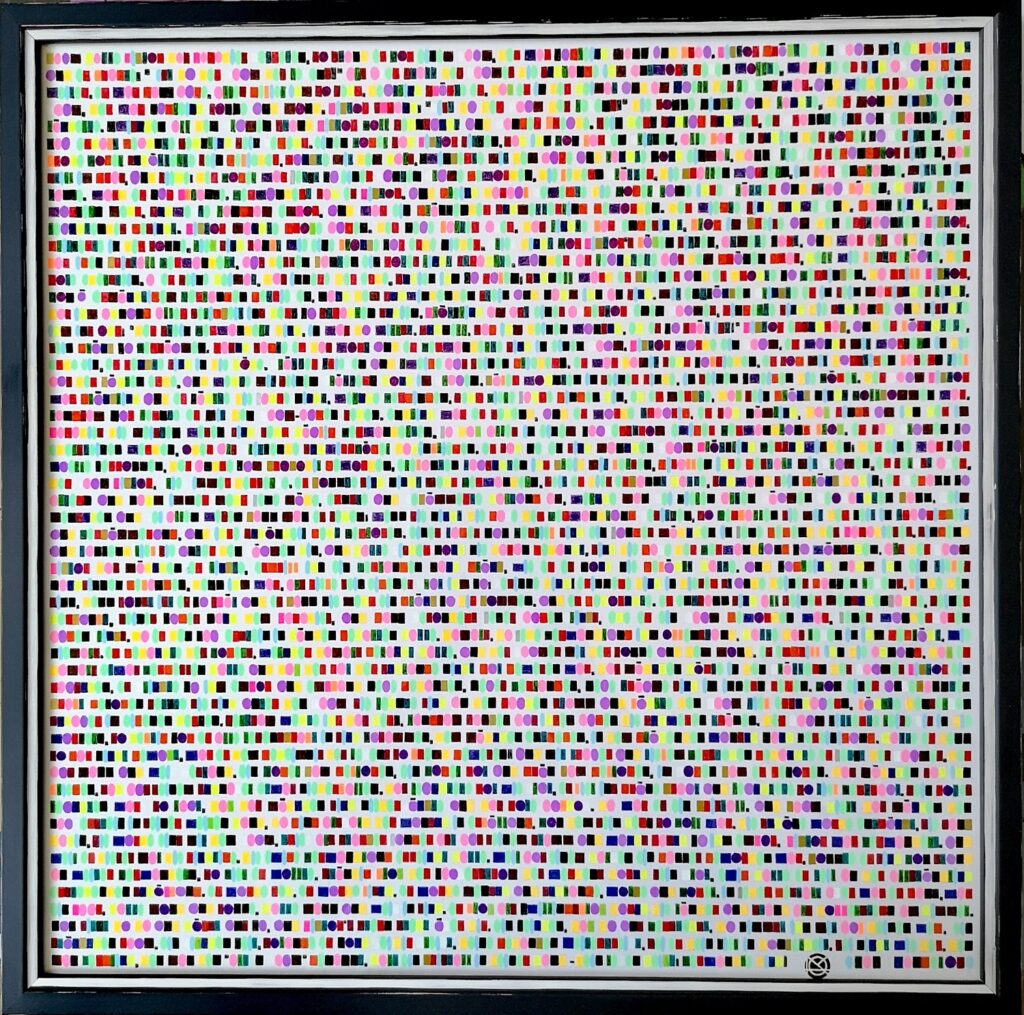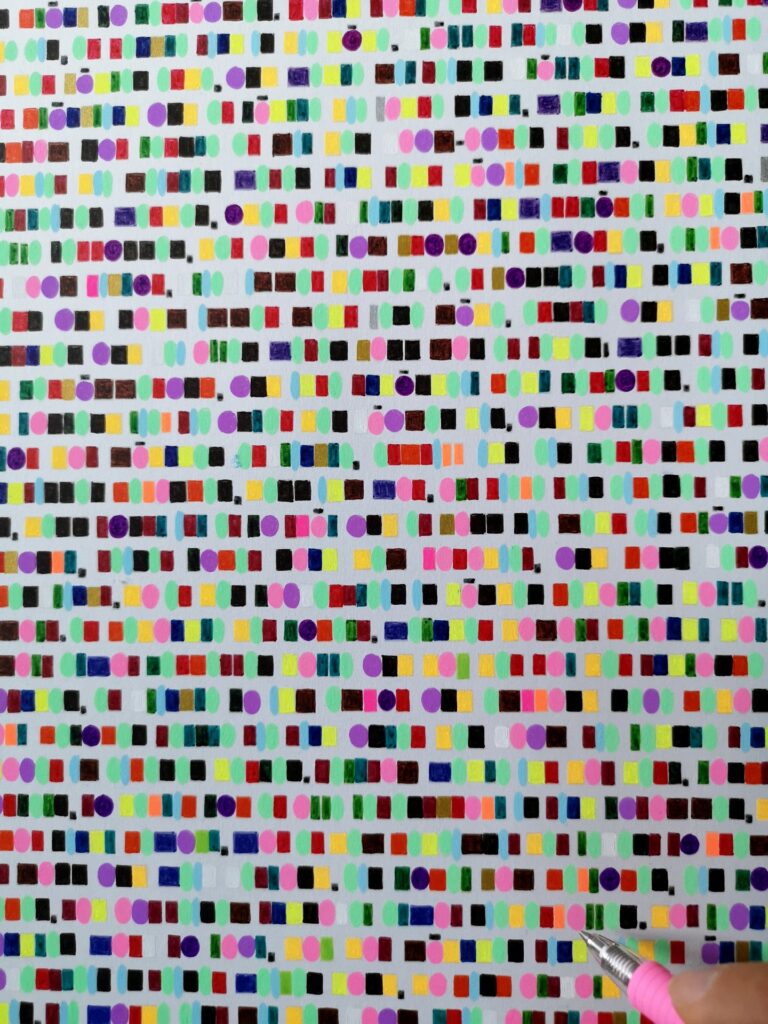“THE COLORED DNA OF A GERMAN TEXT”
© Ivan Cangelosi, 2025
50 X 50 cm
Ink on paper
Technique – Coloured transcription of the tale “Pictor’s Metamorphoses ” of Hermann Hesse.
“Painting with the colors of words” has always been the phrase that identifies my works. It came to mind right away, when in 2008 I began to think about the possibility of giving life to a sort of merging between literary text and figurative art through handwriting. Since about a year, this motto has taken on an even more precise and “meaningfull” sens, thanks to some new works that represent, in my opinion, a step forward in my artistic path. In these new works, the handwriting of the literary text has given way to the “colored hatching” of the text itself. In other words, I created a colored alphabet, assigning each letter a specific color based on my personal synaesthetic perception, that is, the association of two elements belonging to two different sensory spheres. So, for example, the letter “A” has become the color pink, the letter “G” the color orange, the letter “R” red, the letter “C” blue, and so on. 26 letters of the Latin/Anglo-Saxon alphabet transformed into 26 different shades of color.
The fundamental aim behind these works is to create images that represent in a certain sense the authentic representation of the color of the language of a literary text; this is clearly based on the letter-color pairing made in the preliminary stage.
The result is an abstract image, which presents a different overall tone depending on the language used. The frequency with which certain letters recur depending on the language used is in fact very different. In Italian, for example, the letters “O” (corresponding to purple) and “A” (pink) frequently recur, while French is full of letters “E” (aqua green). From this point of view, the texts in English and German, using a broader alphabet that includes the letters K, J, Y, X and W, appear with a wider and more varied range of colors.
The photos of the work published here refer to the German text “Pictor’s Metamorphoses ” of Hermann Hesse.



